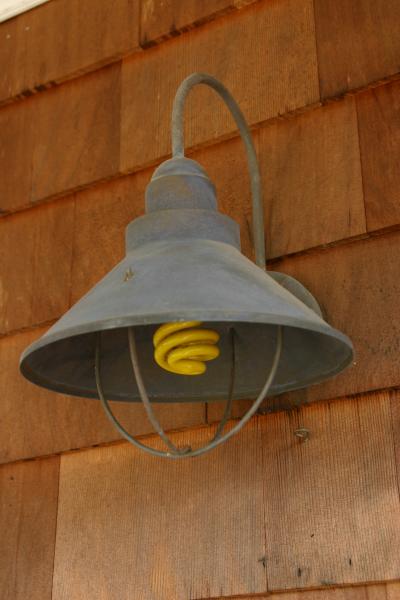Town to Adjust Outdoor-Lighting Law

East Hampton Town’s outdoor lighting regulations will be discussed at Town Hall next Thursday night beginning at 6:30.
Several changes are proposed to the “smart lighting” code adopted in 2006, though the code itself will largely remain intact, Marguerite Wolffsohn, the town planning director, said earlier this week. The changes are designed to “facilitate lighting fixture upgrades by commercial property owners” and to “accommodate new lighting technology.”
A requirement that outdoor commercial lighting not in compliance with the code, which limits excessive light and sky glow, must be replaced with compliant lighting within three years of the law’s adoption, would remain in place. A new provision would provide a bit more time to property owners seeking to phase in changes to lighting, who would be given two years to obtain approval for a lighting plan and then two more to complete its installation. Site plan approval would be required if adding new light fixtures, not when replacing old ones.
The town planning board would have to okay any lighting plan for a nonresidential property proposing to alter over 25 percent of its gross floor area, or one that changes parking — or when there is a change of use that triggers a site plan review.
A change in the law would initially route lighting plan applications to the Planning Department, rather than the Building Department. Applicants who have received a 30-day notice from their insurance company threatening denial or discontinuance of insurance coverage if a certain outdoor light level is not maintained, would jump to the head of the line for review.
Another change would allow lights to be mounted on existing utility poles, as long as the poles are on private property. At present, their use is not permitted.
The code section lays out the standards and requirements to be considered by the planning board in reviewing lighting plans, but, as before, gives the board the power to vary or modify those requirements as long as doing so “does not negate the purposes” of the code.
While the proposed law would set a goal that light fixtures should be mounted no more than 12 feet above natural grade, higher lights could be allowed if “required by the nature of the use or the size of the structure.”
Committee members working on the legislation have debated over where to set limits on the Kelvin rating, or color temperature, of light sources. The higher the rating, Ms. Wolffsohn told the town board at a recent meeting, “the more blue light . . . the more disruptive it is at night,” and the greater the impact on the environment and human health.
The draft law allows light sources up to 3,500 Kelvin (K), but sets a “design goal” of a color temperature no greater than 3,000 K. The planning board, according to the draft, “should consider conditions on and off of the site, energy efficiency, and number of fixtures required to properly light an area.”
The town board will also hold hearings next Thursday on several land purchases using the community preservation fund. They include the purchase of approximately 7.2 aces of land in the Stony Hill area of Amagansett, for $3.6 million. The lots, at 42 and 46 La Foret Lane and 82 Stony Hill Road, are owned by Sasfox Associates, and will be preserved for open space.
Also proposed is the acquisition, for open space and possible future parkland, of 2.9 acres at 85 Bull Path in East Hampton, owned by John Conran, for $1.1 million.
In Montauk, a purchase of 3.6 acres at 8, 18, and 36 Fentwood Road is proposed. The lots are owned by Celia and Costas Paleologos, and would cost $870,000.
The land purchase, according to a town board resolution, would allow for the rerouting of part of the North Neck trail. The Bull Path and Montauk purcases would help the town fulfill a state-imposed requirement to buy $2.2 million worth of parkland to offset the revenue received from the sale of East Hampton’s share of the Poxabogue Golf Course to the other part owner, Southampton Town. The requirement is a condition of obtaining state approval to divest the Poxabogue land of its park designation so that it could be sold. Hearings will also be held next Thursday on a proposed law that would authorize more members of the town’s public safety division, not just building inspectors, to issue stop-work orders; on establishing time-limited and resident-only parking areas in downtown Montauk and prohibiting taxi parking in those lots, and on several code amendments intended to bring the town into compliance with state Municipal Separate Storm Sewer Systems guidelines.
They include a prohibition on feeding geese, adding a section on stormwater management and erosion and sediment control, and prohibiting illicit discharges and connections to the stormwater system.
